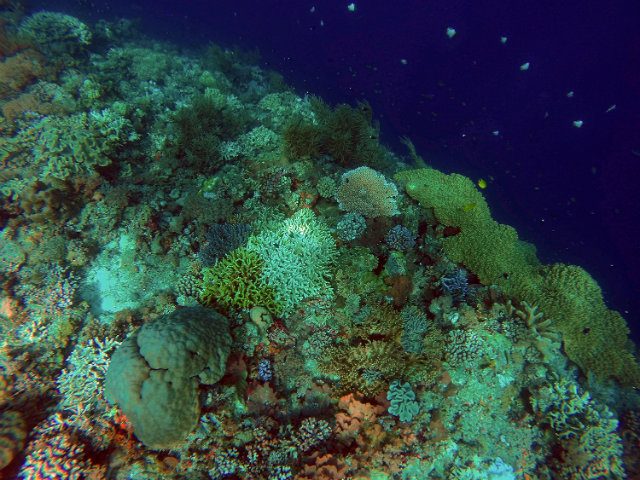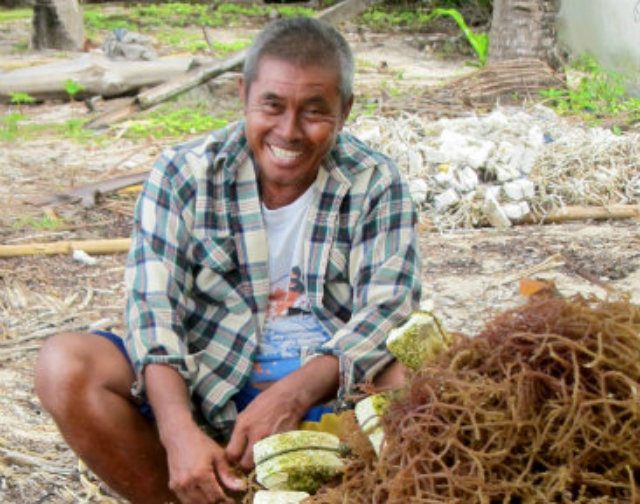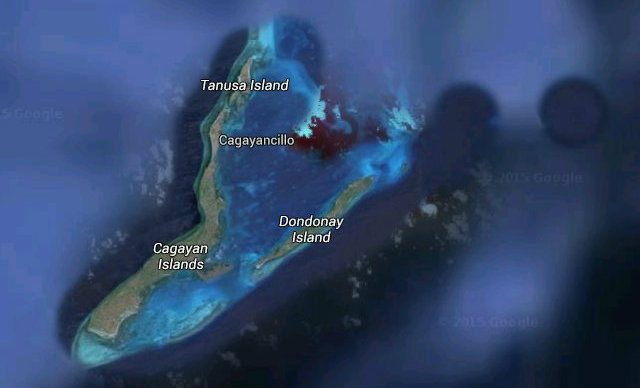SUMMARY
This is AI generated summarization, which may have errors. For context, always refer to the full article.

MANILA, Philippines – Morning has broken in Cagayancillo, at the heart of the Sulu Sea. On the coast of this remote island, the gentle hum of a boat engine grows into a roaring chorus to signal the start of a new day. Hundreds of fishers head out to harvest generous bundles of seaweed. Others steer their boats to deeper waters, where fish abound.
Cagayancillo, Palawan’s precious jewel, is a small community amid the vastness of the Sulu Sea. Nestled 330 kilometers east of Puerto Princesa, Cagayancillo is made up of 30 islets and one main island that hosts the town’s 5,500 residents. After an 18-hour voyage onboard WWF-Philippines research vessel M/Y Navorca, we finally reach this far-flung town at daybreak – just in time to see it come to life.
A journey to this remote municipality is neither for the landlubber or faint-of-heart. One must travel far to set foot on its isles and witness the beauty beneath its waves. Trips to Cagayancillo are usually scheduled from March to May – a brief window of calm water. Outside this timeframe, one must brave the Sulu Sea’s treacherous waters.
Cagayancillo also holds political jurisdiction over the Tubbataha Reefs Natural Park (TRNP), a UNESCO World Heritage Site and popular dive destination. Though it is 170 kilometers away, Tubbataha’s richness seeds Cagayancillo with life and abundance. Over time, Tubbataha’s classification as a Marine Protected Area (MPA) and no-take zone benefited Cagayancillo’s lush marine reserves to ensure an ample food supply plus income source for the townsfolk. (READ:
Fragile wealth
As is common to most Philippine small-island communities, subsistence fishing is the town’s lifeblood.

Pacifico Bundac Jr., a 56-year-old father of three, returns to shore after fulfilling the day’s mission of harvesting a sizeable haul of seaweed and catching enough fish to feed his family. Bundac’s barrio in Barangay Magsaysay is tucked in the main island’s western end, under the swaying fronds of coconut trees. However, the increasing demand for fish translates to mounting pressure on the sea.
“I have been fishing with my father since the day I learned to swim. Back then, we returned to shore with enough fish to feed us for days. Today, we fish just enough to fill our stomachs or earn the day’s keep. We do not want to abuse the abundance we have been blessed with, or else, we’d run out of fish to catch. We farm seaweed to augment what we earn,” he says.
Though he and his neighbors are hard-pressed to conserve this fragile wealth, Bundac considers himself lucky. In Barangay Nusa, located in the island’s opposite end, fishers and seaweed farmers are encountering a serious threat.
“For the first time since I was born, the sea appears to be sick. Our fish and seaweed are dying. Our buyers from Cebu used to buy our seaweed for 30 pesos per kilogram. Now, we only earn 10 pesos a kilo. If we lose our catch and our seaweed farms, we lose our ability to earn,” says 37-year-old seaweed farmer Domingo Fabros.
Adjoining Barangay Talaga also reports unfavorable conditions. The colorful coral meadows within its marine reserves are now bleached and smothered with algae.
Swift action is needed to study the extent of the damage, bring the perpetrators to justice, and implement viable solutions. With the sea as Cagayancillo’s economic engine, WWF-Philippines is working with the local government and conservation partners to establish protocols for unprecedented incidents that threaten to destroy the sea’s ability to feed Kagayanens.
Cagayancillo 15 years ago
Top environmental solutions provider WWF-Philippines began its work in the island-town in 2000, as part of its mandate to help conserve the Tubbataha Reefs and assist Cagayancillo in managing its local marine reserves. The organization’s conservation work in Cagayancillo expanded under the Sulu-Sulawesi Marine Ecoregion (SSME) Programme, and has now become part of an overall network-wide strategy to safeguard the Coral Triangle, the planet’s hotbed of marine life.

A monitoring study conducted by the Tubbataha Management Office (TMO) showed that fish biomass in Cagayancillo stood at 137 metric tonnes per square kilometer in 2014. This is 43% higher from six years ago, when fish biomass was calculated at 96 tonnes per square kilometer. The increase is proof-positive that establishing marine protected areas is an effective way to replenish fish stocks.
Cagayancillo is a sixth-class municipality whose people live below the poverty threshold for rural communities. The environment is its lifeline; take away its richness and you cripple its people’s ability to sustain themselves, leapfrog into development, and secure a better future for their children.
Today, with the brewing threat of climate change plus destructive human activities like the intrusion of outside fishers and cyanide fishing, WWF-Philippines remains committed to grow the fruits of 15 years of conservation work.
WWF-Philippines convened an emergency meeting with the town’s Municipal Development Council to jumpstart the process of drafting a Comprehensive Land and Water Use Plan (CLWUP). The document—which shall cover environmental conservation, livelihood, ecotourism, education, and energy security – is the town’s roadmap to sustainable growth.
“If we care for our natural resources well, growth will be within reach. But if we squander such richness, what else will be left with us? There will always be incidents that test our resilience, but what is important is our ability to rise. The CLWUP that we will help create shall set Cagayancillo as a model small-island community that is able to plan for its future and is capable of implementing such a plan,” WWF-Philippines Project Manager Marivel Dygico tells the Council.
The unbreakable cord
In Laudato Si, the first Papal Encyclical on the environment, Pope Francis said that environmental deterioration affects the planet’s most vulnerable people. “For example, the depletion of fishing reserves especially hurts small fishing communities without the means to replace those resources.”
Nothing could be a more perfect example of such vulnerability than remote Cagayancillo, where marine resource extraction supports almost 80% of all households. Here, the sea means everything.
It is another morning in Cagayancillo. Dozens of fishing boats manned by fathers and sons dot the water’s glassy surface. Mothers tend to their livestock and farmlands, while children walk to their schools decorated by large and lively murals that banner the words: Let us care for our marine reserves.
What a good assurance from the town’s future environmental stewards: supported by partners like Segre, FCM, Cebu Pacific, and the Tubbataha Protected Area Management Board, WWF-Philippines will continue working hand-in-hand with the people of Cagayancillo to achieve a harmonious balance between socio-economic security and environmental conservation.
The M/Y Navorca revs up her engine for the long journey back to Puerto Princesa. The trip may have ended but the hard work has just begun. One who has witnessed the unbreakable cord between planet and people will know that Cagayancillo’s future will be defined by whether its treasures on land and at sea are properly managed. – Rappler.com
If you would like to support WWF-Philippines’ conservation work in Cagayancillo and in the Sulu Sea, please log on to wwf.org.ph.
Sophia Dedace is the Communications Officer of WWF-Philippines. She contributed this piece for Rappler.
Add a comment
How does this make you feel?
There are no comments yet. Add your comment to start the conversation.